Online Jewish content has the potential to meet a wide range of needs
By Ami Eden
The pandemic may be receding, but the continuing expansion of Jewish life online — from classes to family activities to prayer services — will continue. As a result, it has never been more important to understand the nature and depth of the impact that digital experiences can have on people’s Jewish lives, identities and practices.
At 70 Faces Media, the largest Jewish digital publisher in the U.S., we’ve been fielding questions about digital impact for years, especially in talks with funders. Are online Jewish experiences “real”? Is there really any lasting value in visiting a website, opening an email or interacting on social media? How can online activity influence Jewish choices?
Luckily, to paraphrase a great (or, at least, a “big”) sage: New data has come to light. And the underlying message is a powerful one — not only does digital media have the ability to reach unprecedented levels of people in a highly cost effective manner (in our case: 3 million+ monthly web visitors, 1 million+ social followers and 300,000 email subscribers), but online Jewish content has the potential to meet a wide range of needs and impact people in many different ways.
The new data comes courtesy of a report (that we, 70 Faces Media, commissioned from Rosov Consulting) evaluating the Jewish impact of our national brands: the Jewish Telegraphic Agency, My Jewish Learning, Kveller, Alma and The Nosher.
When the pandemic hit in the first months of 2020, 70 Faces Media was already in the middle of a strategic shift toward a focus on deepening our engagement with and impact on our users (in addition to driving overall traffic growth).
With an increased focus on the depth and quality of our digital engagement, those old questions about impact became more relevant than ever.
The first problem in addressing those questions was that it was unclear what to measure — there is no gold standard (or even a bronze one) for measuring online Jewish impact. And even if we knew what to measure, there was still the second problem of how to measure it — our various analytics tools can tell us plenty about usage and general demographics, but nothing about the Jewish identity, knowledge and behaviors of our users.
To answer these questions — with the support of the Jim Joseph Foundation, the Charles and Lynn Schusterman Family Philanthropies and the William Davidson Foundation — we turned to Rosov Consulting.
The process began with Rosov Consulting helping us articulate the Theory of Change that underlies the work of 70 Faces Media — in other words, clarifying the Jewish impact that we aim to have on the lives of our users. This Theory of Change process entailed in-depth interviews with 15 key stakeholders, including funders, board members, and professional staff, and culminated with a commitment to the following goals:
- Increase users’ Jewish knowledge by finding answers to their Jewish questions and relevance to their own lives in Jewish teachings, traditions and practices.
- Increase users’ sense of Jewish connectedness and belonging, and build Jewish communities by feeling more strongly connected to Judaism, Jewish life and the wider Jewish world and feeling a greater sense of belonging to a Jewish community.
- Empower users’ Jewish discovery and exploration by making them feel more confident to engage in Jewish life and helping them explore and embark on a Jewish journey if they choose to do so.
The next step, and the core component of the study, was an online survey of 2,532 users across all five brands conducted in August 2020 focused on if and how we were meeting these mission goals. (The acquisition of our sixth major brand, the New York Jewish Week, would not come until several months later.)
The survey explored users’ pattern of engagement with the five existing 70 Faces Media brands and the impact of engagement with the brands on their Jewish lives. Finally, the study included 10 focus groups with a total of 52 users of the five brands in order to further explore the picture that emerged from the survey findings.
So…
What does 70 Faces Media’s Jewish impact look like?
Rosov Consulting identified four clear areas of impact aligning with the mission goals in our Theory of Change:
- Increased knowledge of Jewish culture, tradition, and practice. Users find all five brands (each in its unique way) to be valuable sources of information and learning about Jewish tradition and contemporary Jewish culture.
- Greater sense of connection to a diverse Jewish world. By learning about and gaining an appreciation of the multiplicity of Jewish life around the world, 70FM users gain a strong sense of connection to a Jewish People beyond their local or national Jewish community.
- Enhanced Jewish social connections. Our readers use the articles, videos, infographics, guides, and other types of content across our brands to connect friends and family (Jewish and not) to Jewish information and traditions and to support their communal ties.
- Increased confidence to explore Jewish life, traditions, and practice. The knowledge they gain gives users (and especially those with little Jewish background) the confidence to explore Jewish life, both privately and as part of a community. This increased confidence leads some users to take on new Jewish practices or elaborate and enhance on existing Jewish practices.
Are specific brands or channels more potent than others in driving Jewish impact?
It turns out that we are delivering impact across all five brands. “While some brands are more impactful in some domains, all brands have some impact in all domains,” Rosov Consulting concluded.
Who are we having the most impact with?
The research found that we generate the greatest Jewish outcomes for users who grew up doing few “Jewish things” and had little Jewish education, and/or users who are highly interested and engaged in Jewish life today (but users who are less engaged in Jewish life are impacted as well).
Is there a discernible engagement tipping point where our Jewish impact increases?
Our impact intensifies with users who: access the brands frequently (at least several times a month) and/or access the brands through multiple entryways, including web, email, and social media (there is, nevertheless, impact on users who access brands less frequently or through a single entryway.)
For those of us at 70 Faces Media, the most surprising of these findings was the determination that all of our brands are impacting users in all four ways and at similar levels in all four ways.
Because our brands are so different and engage different types of audiences, this was a big insight for us — especially when combined with the finding that the more ways a person connects (web, email, social media, etc.), the stronger the impact.
This is an exciting and important revelation: It tells us that all the offerings we create and distribute, day-in and day-out, can and do impact our users — some people might be more attracted to one thing, some to another, but the majority of them are best served by the entirety of what we are offering them via any one brand.
In terms of our next strategic stage — with the goal of dramatically expanding our base of highly engaged and impacted users — these findings speak to the need to invest in our wider capabilities and a range of initiatives rather than focus our attention on any one “silver bullet” project.
We are committed to ensuring that this research does not turn into a one-time snapshot.
Toward that end, we will be using the report to develop a new multi-year plan to expand our base of highly impacted users and more generally to galvanize our organization at all levels behind our strategic focus on deeper engagement.
In the meantime, we are already incorporating the study’s impact questions into our ongoing user surveys, so we have a common language for understanding and measuring the impact of new products, brands and services like the New York Jewish Week and The Hub, our central portal for live online events featuring listings from more than 200 partners, in addition to our own significantly expanded roster of classes, courses and other events. (We are already gleaning important actionable insights from these post-research surveys, but that’s for another column.)
While this research was focused exclusively on our own brands and channels, 70 Faces Media and Rosov Consulting believe the results — and our overall process — provide lessons for the wider field of online Jewish education and engagement. Among the most important are:
- Clarifying desired outcomes is essential to measuring impact. The work of measuring the impact of the 70 Faces Media brands began by articulating a Theory of Change that specified the intended outcomes of the organization and positioned those in the broader context in which the five brands operate. Only by laying this groundwork first was Rosov Consulting able to generate survey questions and discussion guides that sensitively probed users’ experiences.
- Jewish digital media can have outcomes that are cognitive (learning), social (community building), and behavioral (doing more). The fact that all of our brands are driving impact in the same variety of ways — despite major differences in content, style and target audiences — is evidence of the wide ranging potential of different types of digital offerings to influence Jewish lives in a multitude of ways.
- In some cases, Jewish digital media can deliver outcomes that are greater and/or different than expected. We found that brands intended primarily for learning (MJL, JTA) can be powerful connectors, and brands thought of as powerful community builders (Alma, Kveller) can also offer information and learning. And all of our brands, not only the ones offering concrete practical guidance (like The Nosher), have the power to empower and inspire people.
These lessons point to an important general principle for our fellow content producers and program providers: From time to time, put your assumptions to the test and be open to surprises. But, also, the specific twist we encountered provides an important general lesson for the wider field: Don’t sell yourself short — embrace digital’s potential to meet a wide range of needs. This is not a call to be all things to all people, but rather to recognize that digital allows you to achieve several important things at one time for many more people… simply by doing your main thing a little bit better, smarter and with a greater awareness of all the needs that you could potentially be meeting.
Ami Eden is the CEO and Executive Editor of 70 Faces Media. Those looking for more information about the study and opportunities to enhance your organization’s digital reach and capabilities should send an email to [email protected].
originally published in eJewish Philanthropy
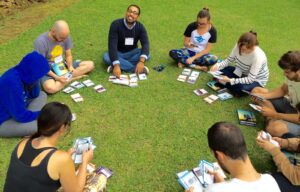 organizations prioritizing it. To support this growth, The iCenter provides a dynamic pipeline of professional certificate and academic degree programs that reach educators and leadership representing day schools, synagogues, camps, youth movements, college campuses, JCCs, federations, Birthright Israel, RootOne, and more. These programs include the Graduate Degree in Israel Education in partnership with the George Washington University, the iFellows: Master’s Concentration in Israel Education, and the Professional Certificate in Experiential Israel Education.
organizations prioritizing it. To support this growth, The iCenter provides a dynamic pipeline of professional certificate and academic degree programs that reach educators and leadership representing day schools, synagogues, camps, youth movements, college campuses, JCCs, federations, Birthright Israel, RootOne, and more. These programs include the Graduate Degree in Israel Education in partnership with the George Washington University, the iFellows: Master’s Concentration in Israel Education, and the Professional Certificate in Experiential Israel Education.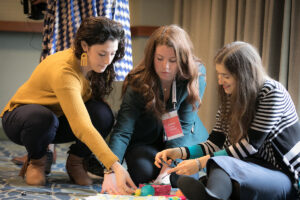 Conflict Education
Conflict Education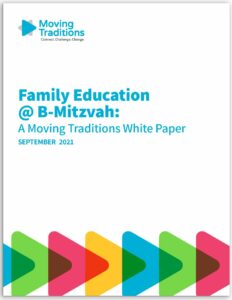
 partnership with 110 organizational partners, and includes a call to action informed by Moving Traditions’ recent convening of 50 leading scholars, Jewish educators, activists, and funders. Moving Traditions has adopted the term “b-mitzvah” in place of “b’nai mitzvah” in recognition of trends in gender fluidity. With these findings, and after more than 17 months of the pandemic, Moving Traditions feels even more urgency to develop this new frame of Jewish family education for preteen families.
partnership with 110 organizational partners, and includes a call to action informed by Moving Traditions’ recent convening of 50 leading scholars, Jewish educators, activists, and funders. Moving Traditions has adopted the term “b-mitzvah” in place of “b’nai mitzvah” in recognition of trends in gender fluidity. With these findings, and after more than 17 months of the pandemic, Moving Traditions feels even more urgency to develop this new frame of Jewish family education for preteen families.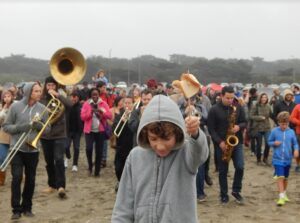
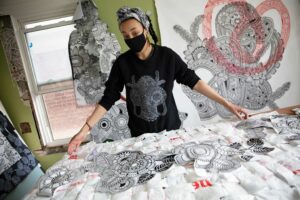 events like
events like